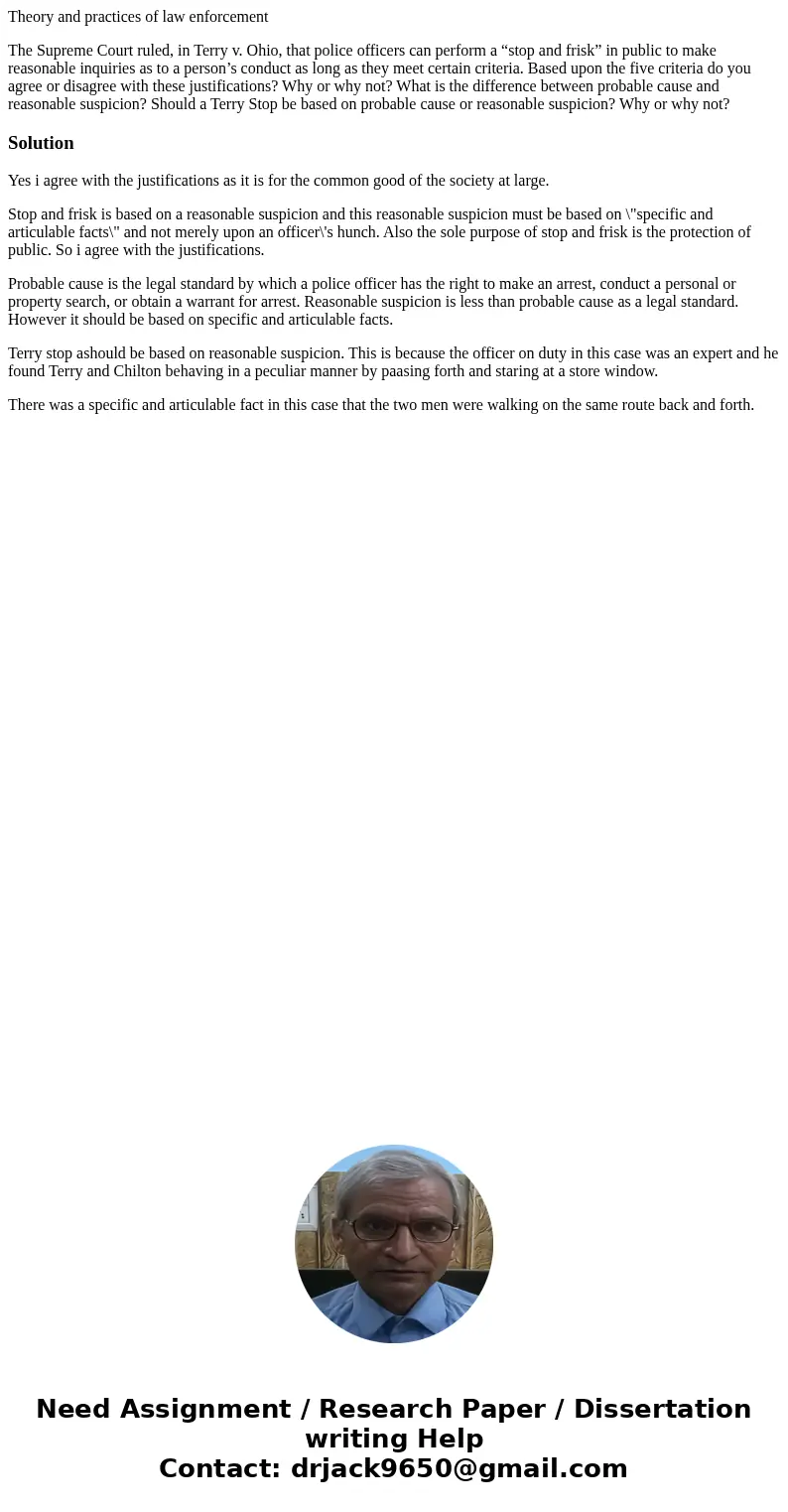Theory and practices of law enforcement The Supreme Court ru
Theory and practices of law enforcement
The Supreme Court ruled, in Terry v. Ohio, that police officers can perform a “stop and frisk” in public to make reasonable inquiries as to a person’s conduct as long as they meet certain criteria. Based upon the five criteria do you agree or disagree with these justifications? Why or why not? What is the difference between probable cause and reasonable suspicion? Should a Terry Stop be based on probable cause or reasonable suspicion? Why or why not?
Solution
Yes i agree with the justifications as it is for the common good of the society at large.
Stop and frisk is based on a reasonable suspicion and this reasonable suspicion must be based on \"specific and articulable facts\" and not merely upon an officer\'s hunch. Also the sole purpose of stop and frisk is the protection of public. So i agree with the justifications.
Probable cause is the legal standard by which a police officer has the right to make an arrest, conduct a personal or property search, or obtain a warrant for arrest. Reasonable suspicion is less than probable cause as a legal standard. However it should be based on specific and articulable facts.
Terry stop ashould be based on reasonable suspicion. This is because the officer on duty in this case was an expert and he found Terry and Chilton behaving in a peculiar manner by paasing forth and staring at a store window.
There was a specific and articulable fact in this case that the two men were walking on the same route back and forth.

 Homework Sourse
Homework Sourse